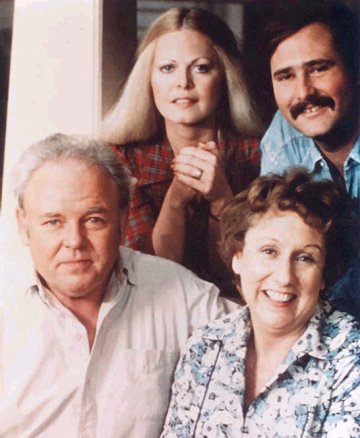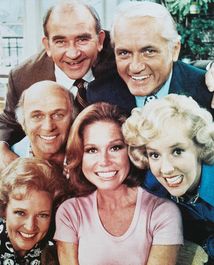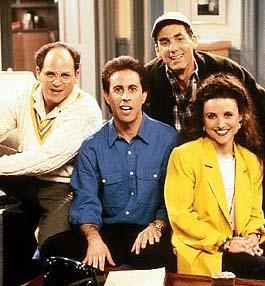

PopEntertainment.com >
Miscellaneous > Save the Sitcom
 Don’t
Let the Sitcom Die
Don’t
Let the Sitcom Die
by
Mark Mussari
Copyright ©
2005 PopEntertainment.com
All rights reserved. Posted: July 19, 2005.
God help the sitcom. By all accounts the once
hugely popular television genre is on its last breath. One
can only hope that reports of the sitcom’s imminent death are premature.
Long regarded as the poor relative of the
revered television drama, the sitcom has lately suffered from a series of
fatal ailments: lack of originality, weak concepts, paper-thin characters,
mindless writing, fleeting network support. Most recent attempts at the
sitcom only leave the viewer wondering: was that supposed to be funny?
In today’s vapid sitcom universe,
three-dimensional complex characters like Archie Bunker and Hawkeye Pierce
have gone the way of pet rocks and word processors. Instead “types” have
replaced the thoughtful characterizations of years gone by. As F. Scott
Fitzgerald warned us: “Begin with a type, and you find you have created
nothing.”
And what a lot of nothing we now have: there is
the fat husband/beautiful wife sitcom, the “those crazy ethnics” sitcom, the
exasperated boy versus quirk y
girl sitcom. Even critically lauded attempts at something purportedly
different—like the painful Arrested Development—are simply not very
funny. Once it was enough to surround Bob Newhart with a cast of zanies
(twice, no less) and let the yucks fly.
y
girl sitcom. Even critically lauded attempts at something purportedly
different—like the painful Arrested Development—are simply not very
funny. Once it was enough to surround Bob Newhart with a cast of zanies
(twice, no less) and let the yucks fly.
The sitcom’s development during the 1960s and
1970s was a movement toward behavioral comedy that focused on situational
conflict played out by a talented ensemble. This phase reached a pinnacle
with the Mary Tyler Moore Show, which taught us that using
accomplished actors (Ed Asner, Cloris Leachman) instead of attractive tyros
elevates the sitcom. Would a network today give two mature talents such as
All in the Family’s Carroll O’Connor and Jean Stapleton their own
sitcom?
In the 1980s the golden and silver age sitcoms
gave birth to Cheers and The Cosby Show, two notably different
yet equally accomplished examples of the genre. Cheers offered
intelligent comedy in darker tones than a television sitcom set had ever
seen, and Cosby, though refusing to genuflect at any cultural altars,
taught indelible lessons about family and race.
In the 1990s the sitcom took a sharp left turn
with Seinfeld, that rich show about “nothing” that brought a weekly
dose of absurdist comedy into our unsuspecting living rooms. Still, the
basic sitcom skeleton remained in tact: a cast of extremes (all played by
solid comic actors) encircled the pivotal lead (the befuddled Jerry).
 Seinfeld’s
greatest achievement was its ability to address the same basic issues as
Mary Tyler Moore (how does a single person make it in the city?) from a
postmodern perspective (she doesn’t) and still be clever and funny.
Seinfeld’s
greatest achievement was its ability to address the same basic issues as
Mary Tyler Moore (how does a single person make it in the city?) from a
postmodern perspective (she doesn’t) and still be clever and funny.
Three other 1990s sitcoms proffered the last
truly admirable efforts in the genre: Frasier dared to be
sophisticated even as television began to eschew making us think. Will
and Grace, especially in its early years, used wit and panache to make
being gay seem both hilarious and irrelevant.
And Everybody Loves Raymond abandoned
anything redolent of “family values” with the most dysfunctional fictional
relatives to grace the small screen. As the hapless Ray warned us in the
first intro: “It’s not about the kids.” Instead, acknowledging the lessons
of All in the Family, Raymond gave us two great actors—Doris
Roberts and Peter Boyle—in supporting roles as disturbing and flawed as a
sitcom gets.
Because it shares reflective qualities with the
culture that gives birth to it, the sitcom’s legacy is too great to
abandon. There is no reason for the genre to die. Lock some writers in a
room and force them to watch “Mary Tyler Moore” for a few months.
Maybe they’ll get it.